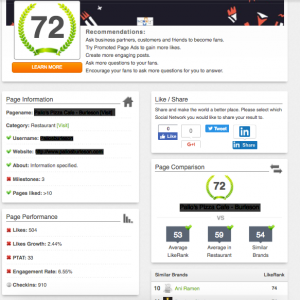By Elaine Mak
In a high-growth company, every executive is focused on performance. When companies achieve their financial goals, there is often a well-deserved and collective victory lap to celebrate hard work and a job well done. But more often than not, these victories were made up of something far more chaotic—luck, all-nighters, and even a toxic culture likely played a larger part that we’d like to admit.
What organizations really need to ask is if their winning performance is repeatable—next quarter, next year, in a strong economy—but also in a weaker one. And for struggling organizations, how well have they addressed what’s dragging their performance down or have they invested in proven strengths?
I have led transformational change at multiple high-growth companies and set strategies that have impacted thousands of workers. While this was not an easy task, I learned something important through the process. To make the leap from “performance-by-chance” to a true high-performing organization, the focus on performance must be built into organization’s entire DNA. This is non-negotiable. And it’s never too early to start.
Here are the four steps to build a lasting performance infrastructure.
1: Make performance an initiative, not just an outcome
Building a performance organization requires more than the sum of each executive’s efforts. It requires an explicit and cross-functional initiative. Leaders need to look across their entire way of working—from mindset to process to communication to metrics—and determine all of the places where a performance focus can be built into the company infrastructure. Like any other company initiative, a strategy, work plan with milestones, clear roles and responsibilities, and accountability are needed. Without this level of granularity, your organization will have a performance goal, but not a performance culture.
2: Pave the way for a performance owner
Building company-wide infrastructure for any initiative requires an owner. Companies must tap one executive to build a comprehensive performance culture, one that is fully ingrained in operating principles to achieve performance objectives. In many companies, this responsibility may live in a silo with a CFO or a CHRO, limiting the full impact of a strong performance culture to just one part of the company. The key is to ensure that people and performance are seen through an integrated lens across the entire company. While not every organization has a formal chief performance officer, this person will effectively serve that function. Equally important is taking a hard look at who in your organization may be impeding your performance. For example, as your company matures, be sure your leaders’ strengths are aligned with the current phase of growth. Be prepared to make intentional and bold moves when they are not.
3: Align the executive team behind it
The entire executive team must be clear on the organization’s core philosophy and values and be committed to doing their part to build a performance organization. More than an informal show of support, I recommend using what I call executive partnership agreements. At a macro level, these agreements define how we make decisions and how we treat people as a company. Tactically speaking, executives enter explicit agreements with each other, covering preferred operating and communication styles, boundaries to respect, how they like to receive feedback, and what kinds of things shut them down. This helps build trust among partners but also provides a framework to efficiently and respectfully handle the inevitable moments of disagreement.
4. Build a cross-functional infrastructure plan
Operationalizing performance cannot simply be announced but must be built into every part of an organization. Examine the entire product, marketing, and employee lifecycles, and enforce how you are treating and engaging people across every stage, from recruiting to exit. Get tactical and identify the clear changes that need to take place. For example, Valimail’s recent transformation included a new company dashboard with early warning signs of performance problems, a performance management system that equally rewards outcomes and how work is done, and the redesign of project teams from hierarchical to strength-based.
With performance as a program, not just a promise, it is possible to unlock the trapped and hidden financial gains that live across your organization. Your company can even reclaim some of the total addressable market (TAM) you are losing to competitors, enabling a new level of sustainable growth. Most importantly, with the clarity and focus that comes from executive ownership, you can stop leaving performance up to chance.
Elaine Mak is chief people and performance officer at Valimail.
(7)
Report Post






